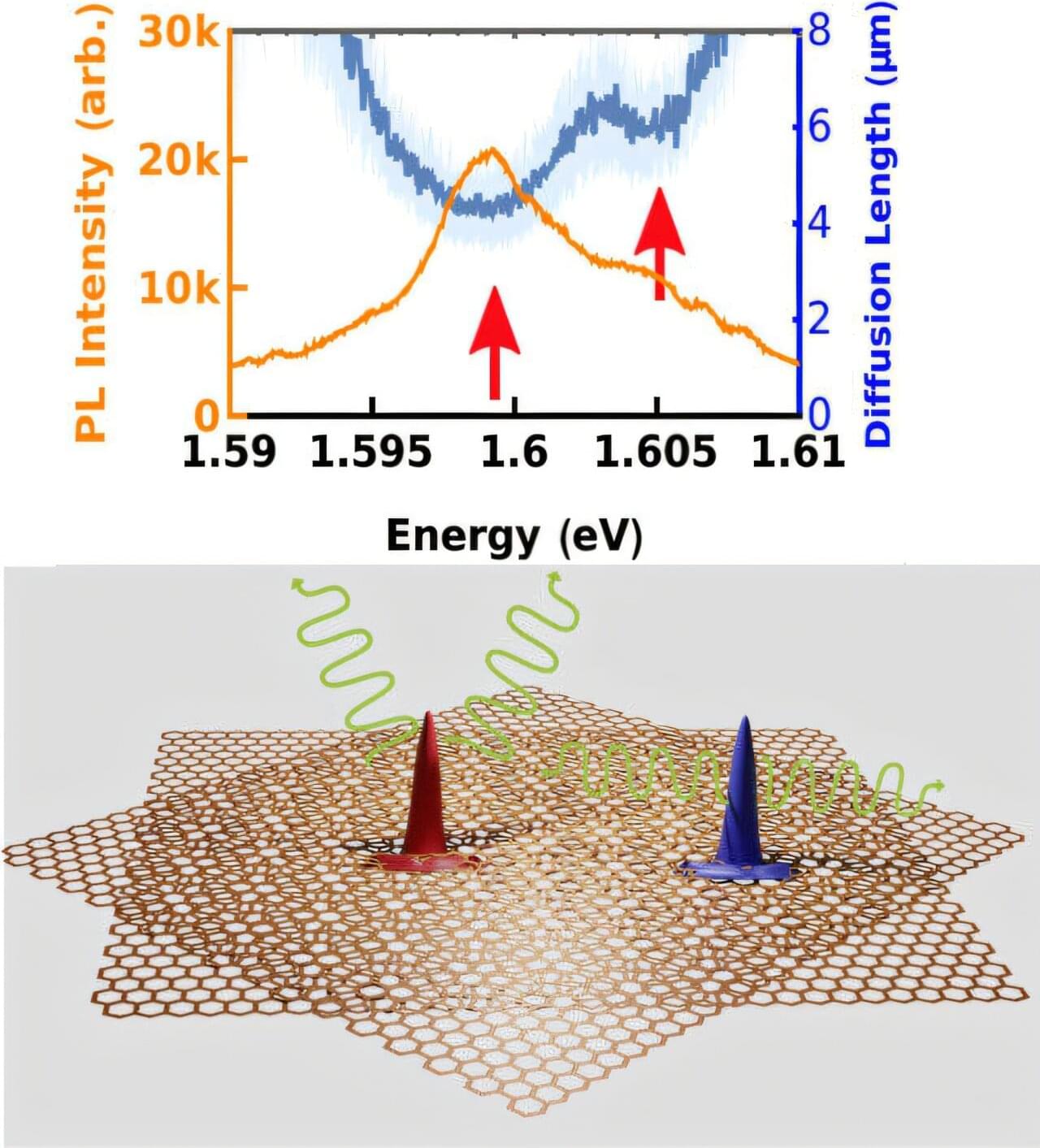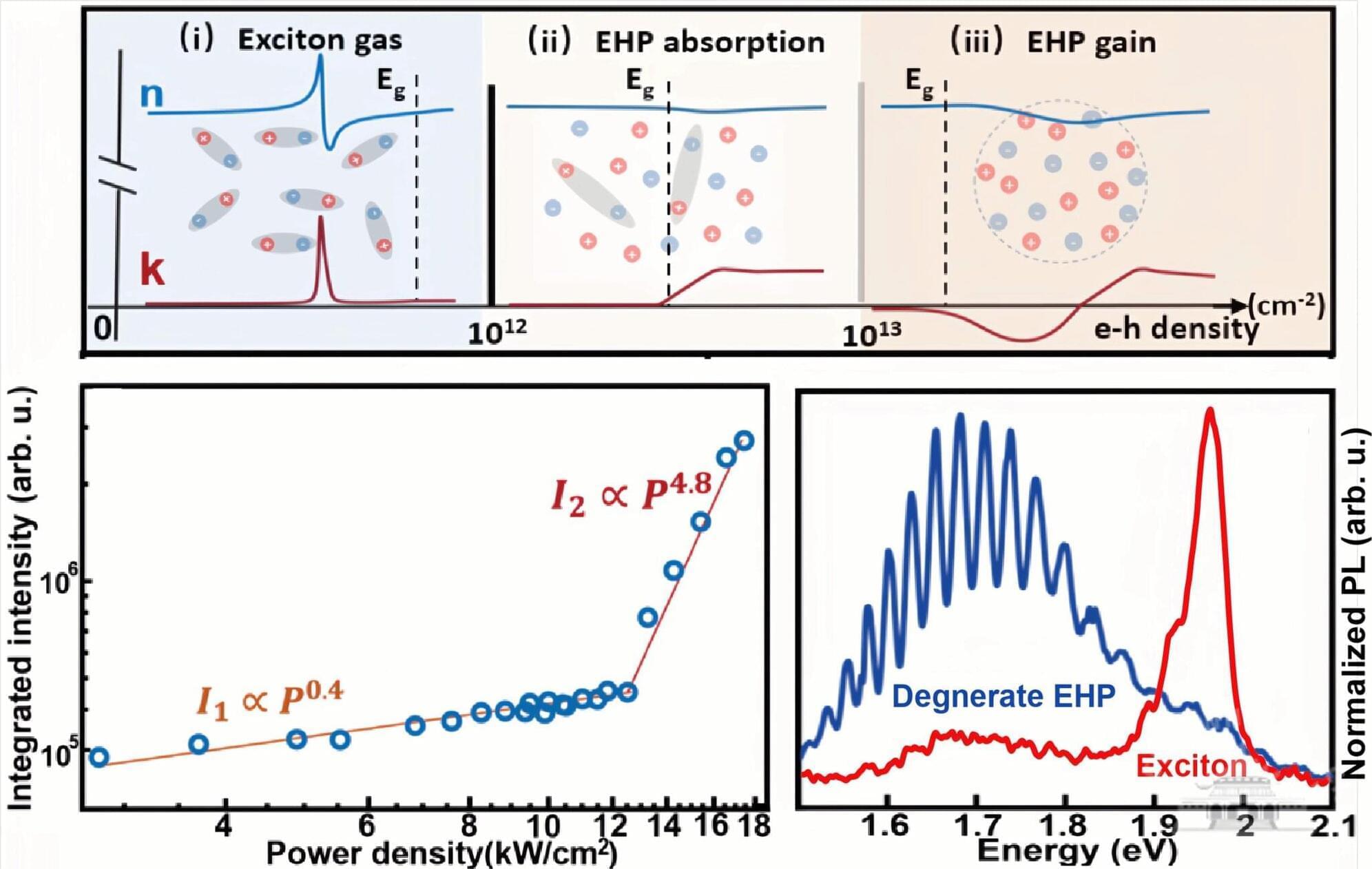Scientists have long sought the particle that carries the force of gravity, but a new theoretical model tosses out that idea entirely – and shows how it could be tested in experiments



Researchers have characterized the temperature-induced frequency shifts of a thorium-229 nuclear transition—an important step in establishing thorium clocks as next-generation frequency standards.
Atomic clocks are at the core of many scientific and technological applications, including spectroscopy, radioastronomy, and global navigation satellite systems. Today’s most precise devices—based on electronic transitions in atoms—would gain or lose less than 1 second over the age of the Universe. An even more accurate timekeeping approach has recently emerged, based on a clock ticking at the frequency of a nuclear transition of the isotope thorium-229 (229 Th) [1, 2]. Now a collaboration between the teams of Jun Ye of JILA, the National Institute of Standards and Technology, and the University of Colorado Boulder and of Thorsten Schumm of the Vienna Center for Quantum Science and Technology has characterized one of the main sources of the systematic uncertainties that might spoil a clock’s accuracy: temperature-induced shifts of the clock transition frequency [3].

Scientists have unlocked a new way to control ionization, the process where atoms lose electrons, using specially designed light beams
By leveraging optical vortex beams, light that carries angular momentum, they can precisely dictate how electrons break free from atoms. This discovery could reshape imaging technology, enhance particle acceleration, and open doors to advancements in quantum computing.
Performing computation using quantum-mechanical phenomena such as superposition and entanglement.

Michaela Leung: “Oxygen is currently difficult or impossible to detect on an Earth-like planet. However, methyl halides on Hycean worlds offer a unique opportunity for detection with existing technology.”
What can methyl halides, which are gases that consist of one carbon and three hydrogen atoms while being attached to a halogen atom, help scientists identify life beyond Earth? This is what a recent study published in The Astrophysical Journal Letters hopes to address as an international team of researchers investigated how methyl halides on exoplanets known as “Hycean” worlds could indicate the presence of life as we know it, or even as we don’t know it. Hycean exoplanets possess liquid water oceans with a hydrogen atmosphere above them, potentially enabling appropriate surface temperatures and pressures for life to exist.
For the study, the researchers discussed the potential for using NASA’s James Webb Space Telescope (JWST) to observe large exoplanets orbiting red dwarf stars, which are smaller and cooler than our Sun. The researchers noted that recent observations of K2-18 b and TOI-270 d, which are designated as Super-Earth and Neptune-like exoplanets, respectively, while each orbiting red dwarf stars. Additionally, such exoplanets could be ideal targets for JWST to identify methyl halides in their atmospheres. The reason Hycean exoplanets are considered ideal targets is due to the difficulty of observing Earth-sized exoplanets orbiting brighter stars.

Dark matter could be an entire dark sector of the universe, with its own particles and forces.
By Kathryn Zurek edited by Clara Moskowitz
Have you ever stood by the sea and been overwhelmed by its vastness, by how quickly it could roll in and swallow you? Evidence suggests that we are suspended in a cosmic sea of dark matter, a mysterious substance that shapes galaxies and large structures in the universe but is transparent to photons, the carriers of the electromagnetic force. Our galactic home, the Milky Way, is submerged in dark matter, but this hidden body but does not devour us, because its forces cannot touch the regular matter we’re made of.

Ultrahigh Energy Cosmic Rays are the highest-energy particles in the universe, whose energies are more than a million times what can be achieved by humans. But while the existence of UHECRs has been known for 60 years, researchers have not succeeded in formulating a satisfactory explanation for their origin that explains all the observations.
But a new theory introduced by New York University physicist Glennys Farrar provides a viable and testable explanation for how UHECRs are created.
“After six decades of effort, the origin of the mysterious highest-energy particles in the universe may finally have been identified,” says Farrar, a Collegiate Professor of Physics and Julius Silver, Rosalind S. Silver, and Enid Silver Winslow Professor at NYU. “This insight gives a new tool for understanding the most cataclysmic events of the universe: two neutron stars merging to form a black hole, which is the process responsible for the creation of many precious or exotic elements, including gold, platinum, uranium, iodine, and xenon.”
Check out my quantum mechanics course on Brilliant! First 30 days are free and 20% off the annual premium subscription when you use our link ➜ https://brilliant.org/sabine.
In 2020, a group of MIT researchers detected an anomaly in the nuclei of ytterbium atoms. They said that the nuclei’s strange behavior might be indicative of a “dark force” caused by a currently-undiscovered mystery particle that might make up dark matter. In 2020, the anomaly only had a significance of 3 sigma. But now, another group has confirmed it at a whopping 23 sigma! What does that mean for physics? Let’s find out.
Paper: https://journals.aps.org/prl/abstract… Check out my new quiz app ➜ http://quizwithit.com/ 💌 Support me on Donorbox ➜ https://donorbox.org/swtg 📝 Transcripts and written news on Substack ➜ https://sciencewtg.substack.com/ 👉 Transcript with links to references on Patreon ➜ / sabine 📩 Free weekly science newsletter ➜ https://sabinehossenfelder.com/newsle… 👂 Audio only podcast ➜ https://open.spotify.com/show/0MkNfXl… 🔗 Join this channel to get access to perks ➜
/ @sabinehossenfelder 🖼️ On instagram ➜
/ sciencewtg #science #sciencenews #physics #darkmatter.
🤓 Check out my new quiz app ➜ http://quizwithit.com/
💌 Support me on Donorbox ➜ https://donorbox.org/swtg.
📝 Transcripts and written news on Substack ➜ https://sciencewtg.substack.com/
👉 Transcript with links to references on Patreon ➜ / sabine.
📩 Free weekly science newsletter ➜ https://sabinehossenfelder.com/newsle…
👂 Audio only podcast ➜ https://open.spotify.com/show/0MkNfXl…
🔗 Join this channel to get access to perks ➜
/ @sabinehossenfelder.
🖼️ On instagram ➜ / sciencewtg.
#science #sciencenews #physics #darkmatter


Physicists have measured a nuclear reaction that can occur in neutron star collisions, providing direct experimental data for a process that had previously only been theorized. The study, led by the University of Surrey, provides new insight into how the universe’s heaviest elements are forged—and could even drive advancements in nuclear reactor physics.
Working in collaboration with the University of York, the University of Seville, and TRIUMF, Canada’s national particle accelerator center, the breakthrough marks the first-ever measurement of a weak r-process reaction cross-section using a radioactive ion beam, in this case studying the 94 Sr(α, n)97 Zr reaction. This is where a radioactive form of strontium (strontium-94) absorbs an alpha particle (a helium nucleus), then emits a neutron and transforms into zirconium-97.
The study has been published in Physical Review Letters.

Amplified spontaneous emission is a physical phenomenon that entails the amplification of the light spontaneously emitted by excited particles, due to photons of the same frequency triggering further emissions. This phenomenon is central to the functioning of various optoelectronic technologies, including lasers and optical amplifiers (i.e., devices designed to boost the intensity of light).
The excitation of a material with high-energy photons can produce what is known as an electron-hole plasma. This state is characterized by the dense presence of negatively charged particles (i.e., electrons) and positively charged vacancies (i.e., holes).
Researchers at Wuhan University recently observed amplified spontaneous emission originating from degenerate electron-hole plasma in a 2D semiconductor, namely suspended bilayer tungsten disulfide (WS2). Their paper, published in Physical Review Letters, could pave the way for the development of new optoelectronic technologies based on 2D semiconductors.